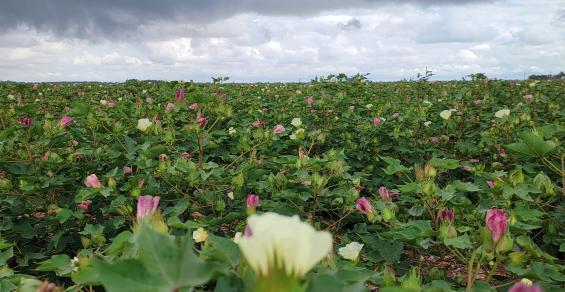Accumulation of at least 350 heat units and cotton bolls are considered safe from worm or Lygus damage. Another 100 units and they are secure from stink bugs, according to Kerry Siders, Integrated Pest Management extension agent for Cochran, Hockley and Lamb counties.
Since August 1, most of the area heat unit accumulation is near the 450-heat unit threshold, Siders said, and likely safe from a late flush. The same can be said for bolls set after August 1, once they reach these heat unit benchmarks, according to a recent Plains Cotton Growers release.
“I’m not saying that everybody’s out of the woods in terms of insects, because there is a fair amount of insect pressure out there in all crops,” Siders said. “However, be very careful of suggesting to someone to treat, because even if there is damage it may not justify the expense to treat.”
This time of year, Lygus bugs are still present, but only because they are quickly reproducing and in large numbers, said Megha Parajulee, professor in the Texas A&M University Department of Entomology. “That doesn’t mean they’re damaging cotton plants, even though you may see many of them when you scout.”
Cotton aphids are one exception. If present, producers are encouraged to consider treatment options.
Monday, Aug. 22, scattered rainfall sprinkled and in some areas, showered, the southern High Plains. Afton received 8 inches in less than 24 hours, while other areas, like Lubbock, received less than an inch.
The rainfall received has caused some cotton plant regrowth. Siders said many fields don’t have a sufficient boll load to keep regrowth in check, which will negatively impact what little yield those fields were going to produce before the rain.
And with rain comes weed pressure. “Most of the weed pressure we’ve seen won’t amount to a whole lot for this year’s crop, but it does represent a fair amount of weed seed that will spread,” Siders said. “Even a little pigweed plant can have several hundred weed seed on it, so it does represent a problem.”
Siders said this is the perfect time to start sampling soils for nematodes. For years, 80% of the fields in Siders’ territory have had nematodes. He says, even if a field is fallow, it’s still worth sampling. Nematode samples collected prior to harvest may give the best estimate of nematode populations, he said, so now is the time to do it.
Producers are encouraged to watch for weeds following the recent rainfall.




